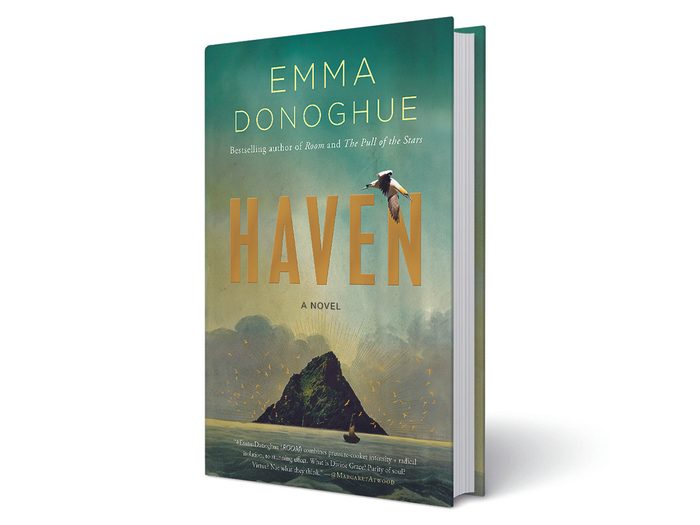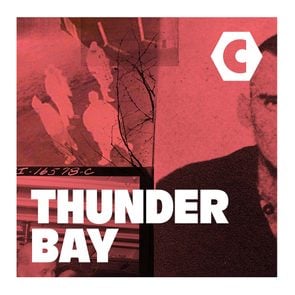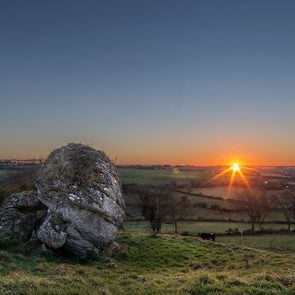Inside Emma Donoghue’s New Book, Haven

The bestselling author returns with a tale of cruelty and survival.
Emma Donoghue is one of Canada’s top literary shapeshifters. She’s written Dickensian Victorian sagas, shimmering fairy tale retellings and heart-pulsing historical mysteries. But Donoghue is at her finest when she does away with all that epic window dressing. Her best—and bestselling—novel is, of course, Room, about a young woman and her five-year-old son who are held hostage for years in an 11-by-11-foot shack by the mother’s kidnapper and rapist. In a setting so spartan, Donoghue forces herself to find new terrain, plumbing her characters’ relationships, needs and fears to create a psychological thriller that manages to be harrowing and hopeful all at once.
Somehow, Donoghue conjures the same magic with her latest novel, Haven. Set in seventh-century Ireland, it chronicles the journey of two monks and a scholar-priest to find and settle the real-life island that would come to be known as Skellig Michael—a craggy peak jutting out of the North Atlantic that’s been home to monasteries for at least 1,500 years. On the surface, this novel couldn’t be more different than Room: it’s historical rather than contemporary, sweeping instead of cramped, a journey as opposed to a confinement. But Donoghue is using the same tool kit in both books: the horrors of isolation, the desperation to survive, the power to save or destroy another human being.
When the novel opens, the three main characters are dining together at Cluain Mhic Nóis, a monastery in what is now County Offaly in central Ireland. There’s Trian, a strapping young rookie monk whose farming family sent him to the abbey as a child. There’s Cormac, middle-aged and weary, who took his holy orders after his family died of plague. And finally there’s Artt, a visiting priest who dreams one night that he and the other two men will embark on a journey to establish a new monastery on an uninhabited island, cloistered far away from the sin and indulgence of human society. First, Artt demands the brothers swear an oath of unquestioning obedience to him, trusting in his learnedness, his force of personality and his relationship with God. Then they embark down the River Shannon in a boat made from a dozen ox hides, with only one spare set of clothes for them to share and some meagre food and water rations.
Donoghue sends readers down a gripping garden path. At first, the book appears to be a tale of man versus nature: the brothers contend with torrential storms, learn to hunt and forage in the river and on its banks and, after Artt has yet another vision from God, settle on the barren island, which is inhospitable to any life except for thousands of screeching orange-beaked razorbills. As the novel progresses, it becomes clearer that it’s actually about something far more dangerous than the hostile wilderness: the cultish devotion to a charismatic leader.
In Artt, Donoghue has created a deliciously loathsome villain. He’s pathologically convinced of his own superiority, even though Trian knows more about navigating the sea and Cormac has a way with herbs and medicine. Like any cult leader, he belittles and undermines his followers, starves them into submission and leads them into treacherous territory on the basis of his supposed communion with God. Somehow, Donoghue has turned a novel about Dark Age monks into something terrifyingly modern. In a different time and place, Artt could be a Scientology guru, an Instagram influencer or Donald Trump. And he turns out to be a hell of a lot scarier than a barren island in the middle of nowhere.
Next, check out 10 Indigenous authors you should be reading.






